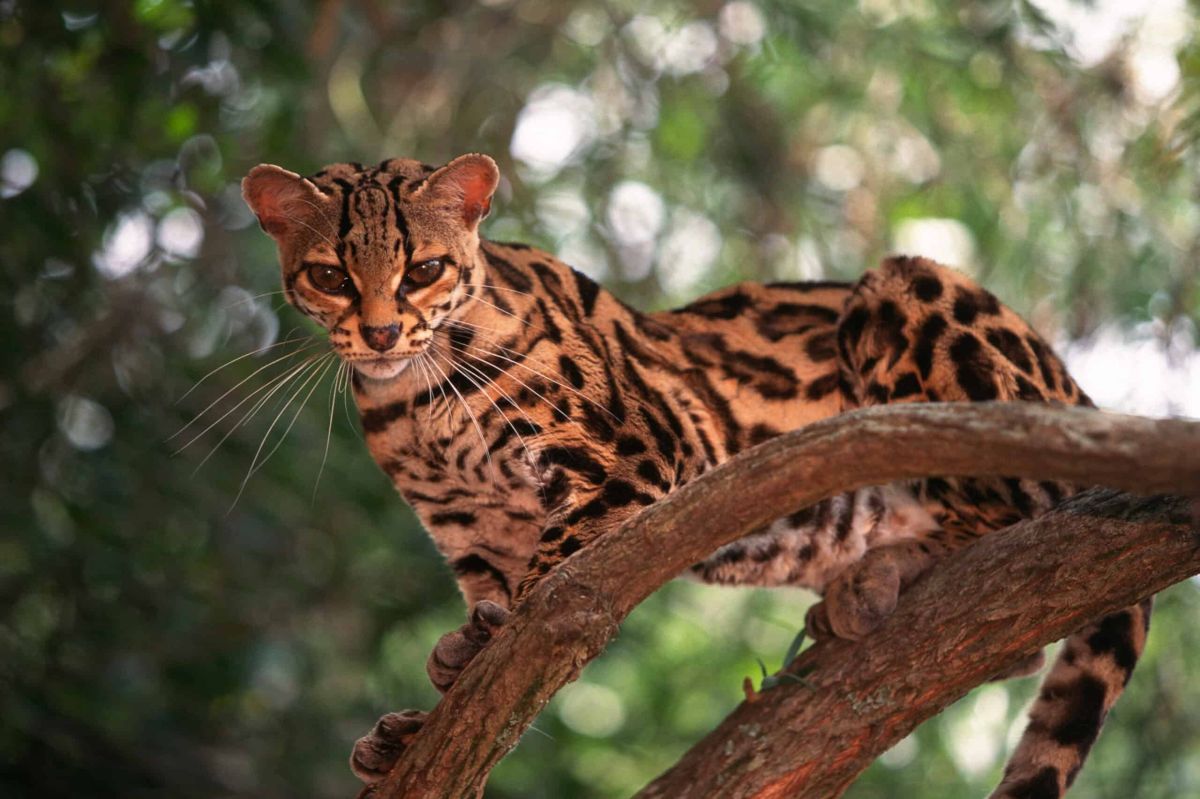The Margay: Felid of the Neotropical Forests

The Margay (Leopardus wiedii) is a small wild cat species native to the dense and diverse forests of Central and South America. With its striking appearance resembling that of a domestic cat but with unique adaptations suited for a life amongst the trees, the Margay is a remarkable example of nature’s ingenuity and elegance.
Physical Characteristics
The Margay is often described as a miniature version of the Ocelot, share similar coat patterns characterized by a beautiful fur coat decorated with dark spots and rosettes set against a tawny or grayish background. Adult Margays typically weigh between 6 to 15 pounds and measure about 19 to 35 inches in length, with a long tail that can be as long as the body itself. The tail is not only a distinctive trait but also serves as a balancing tool that aids the Margay in its incredible agility among the trees.
One of the notable features of the Margay is its flexible ankle joint, allowing it to rotate its back foot and climb down trees headfirst. Its long limbs and sharp retractable claws enable it to navigate through the canopy with ease, making it an adept tree-dweller. Their large eyes are adapted for nocturnal hunting, providing excellent night vision to spot prey in low-light conditions.
Habitat and Range
Margays are primarily found in tropical and subtropical rainforests, though they can also inhabit dry forests, cloud forests, and mangroves. Their range extends from southern Mexico down to northern Argentina, including parts of Central America. They tend to prefer areas with dense foliage that provide ample cover for hunting and hiding from potential predators.
The Margay’s habitat is integral to its survival, as it relies heavily on forest ecosystems for food and shelter. Deforestation and habitat fragmentation pose significant threats to Margay populations, emphasizing the urgent need for conservation efforts in their natural habitats.
Behavior and Diet
Margays are solitary animals and are primarily nocturnal, hunting at night for food. Their diet consists mainly of small mammals, birds, reptiles, and insects, with an inclination toward arboreal prey, such as monkeys and squirrels. They demonstrate impressive hunting skills, often using stealth and patience to stalk their victims before pouncing.
One of the fascinating behaviors of the Margay is its ability to mimic the calls of its prey. This vocal mimicry can draw unsuspecting animals into range, making it easier for the Margay to capture them. Additionally, Margays are known to be excellent climbers, often using trees not just for hunting but also for resting, sleeping, or escaping from threats.
Conservation Status
According to the International Union for Conservation of Nature (IUCN), the Margay is currently classified as “Near Threatened.” While they remain relatively widespread in some areas, the main threats to their existence include habitat loss due to deforestation, agriculture, urban expansion, and poaching. Margays are also affected by the illegal pet trade, where they are captured and sold as exotic pets.
Conservation efforts for the Margay involve habitat protection, enforcing anti-poaching laws, and raising awareness among local communities about the importance of preserving biodiversity. Various wildlife organizations and research initiatives aim to monitor Margay populations and their habitats, promoting strategies that mitigate the impact of human activities on these elusive felids.
Conclusion
The Margay is a stunning embodiment of the rich biodiversity that can be found in the Neotropical forests. Its exceptional adaptations for arboreal life, along with its intriguing behaviors, make it a fascinating subject for study and admiration. As we continue to expand our understanding of this remarkable feline, it is imperative to prioritize conservation efforts to ensure that future generations can enjoy the beauty and ecological significance of the Margay in its natural habitat. Protecting the Margay means safeguarding not only a species but also the health and integrity of forest ecosystems.



